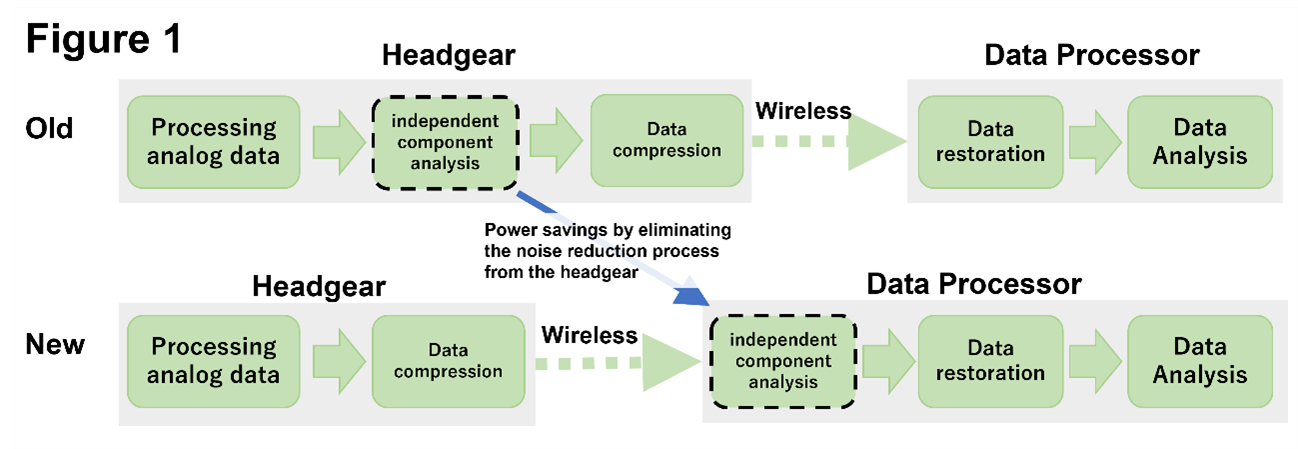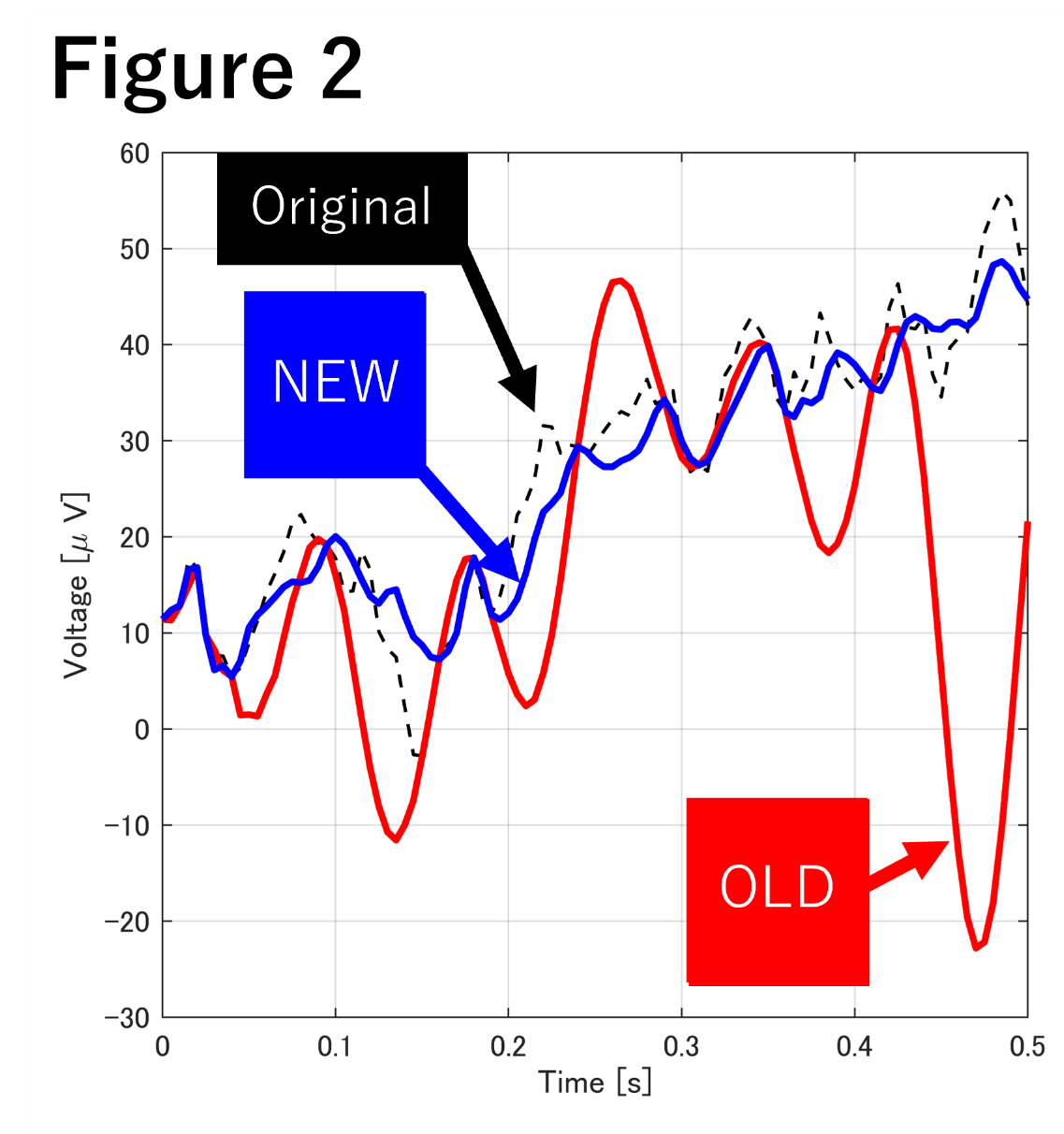Advantages
- Developing a wireless electroencephalograph powered by energy harvesting.
- Software: Developing compression sensing algorithms that can compress and restore data with high accuracy and speed.
- Hardware 1: Building original circuits and devices to realize the above-mentioned compressed sensing.
- Hardware 2: Development of power circuit elements with extremely low power consumption
- There is potential for low power consumption in sensing biological signals other than brain waves (e.g. ECG).
- Other than biological signals, temperature, humidity, atmospheric pressure, wind velocity, electric current/voltage, audio, video, etc. can also be sensed.
Background & Technology
Recently, there has been a growing need for IoT devices and wearable devices. Electroencephalographs are generally used in medical institutions and are large and consume a lot of power. On the other hand, the recent proliferation of wearable devices has increased demand for monitoring biological signals, but there are few devices suitable for such applications in EEG. Against this backdrop, Associate Professor Kanemoto and his colleagues at the Graduate School of Engineering, Osaka University, have independently developed a wearable electroencephalograph (EEG). The wearable electroencephalograph should be wireless between the headgear with electrodes and the device (computer) that processes the EEG signals. In other words, the wearable electroencephalograph will operate on battery power, requiring low power consumption of the device. One method that can be expected to achieve significant power savings is the use of data compression technology to reduce the amount of data and communication being handled. However, data compression poses the dilemma of time and computational cost for compression and restoration versus power saving, and the dilemma of high compression for power saving resulting in poor signal quality, so it is not easy to develop a data compression technology that can satisfy both of these dilemmas. Dr. Kanemoto and his colleagues have independently developed the following technology, which is effective under such constraints, and are realizing a wearable electroencephalograph with ultra-low power consumption.
(1) A signal processing algorithm that applies random undersampling and independent component analysis. By performing compression by random undersampling, the independent component analysis used to remove noise (artifacts) caused by disturbances such as blinking is not performed on the headgear side, but on the signal processing computer side (i.e., independent component analysis is performed on the compressed signal sent from the headgear). The proposed technique is to perform the independent component analysis on the signal processing computer side, not on the headgear side. Normally, the independent component analysis is performed on the headgear and then compressed, resulting in higher power consumption, but this problem can be avoided. (See Figure 1).
A compression algorithm with high recovery accuracy. Biological signals such as brain waves are generally periodic. This technology uses this characteristic to create a special dictionary matrix. Furthermore, by combining the compressed sensing and restoration algorithm with the BSBL algorithm, Dr. Kanemoto has developed a compression algorithm that enables high compression and high speed restoration. Furthermore, it has been demonstrated that this method can significantly improve the restoration accuracy compared to the conventionally used DCT dictionary (see Figure 2).
Uniquely developed LDO regulator. We have developed our own LDO regulator, which is often used in wearable devices. PSRR (power supply ripple removal performance) in the band above 1 kHz has been greatly improved while maintaining low power consumption. This technology is explained in detail on our website below.
Low dropout regulator circuit that achieves both high noise rejection performance and extremely low power consumption
In addition, a prototype that employs some of these latest technologies in an actual device has already been developed. This wearable electroencephalograph prototype consumes about 70% less power for the entire system compared to similar conventional electroencephalographs. In other words, the wearable electroencephalograph developed by Dr. Kanemoto can be powered by environmental power generation (energy harvesting).
 |
 |
Researcher
Associate Professor Daisuke Kanemoto (Graduate School of Engineering, Osaka University)
Patent & Publication
- Patents applied in Japan and PCT.
- “Random Undersampling Wireless EEG Measurement Device Using a Small Teg”, International Symposium on Circuits and Systems (ISCAS), 2023
Expectation
The technology developed by Dr. Kanemoto has potential applications in various signal sensing. We are happy to assist those who are interested in wireless, miniaturization, and low power consumption of not only brain wave sensing but also other biological signals, IoT devices, and wearable devices, those who are interested in data compression technology for wireless communication, and those who are expecting to develop devices by energy harvesting. We can assist you in the development of technology. We can propose a cooperative framework with Osaka University through technical guidance, joint research, patent licensing, and other agreements. We also welcome your participation in the development of electroencephalographs based on this technology.
Project No. DA-04227


